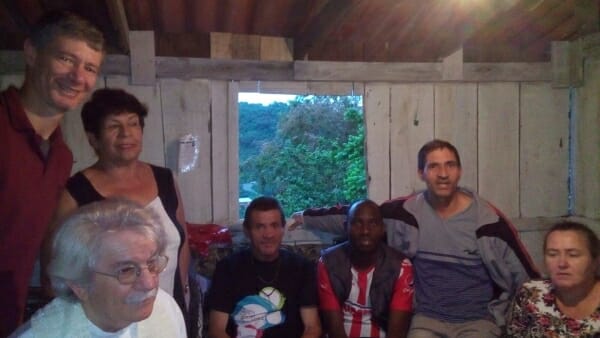 “On April 21, 1964, Chiara Lubich wrote in her diary: “I dreamed of a focolare amongst the mocambos, built like a mocambo because our houses should be like the ones around them, and our house is the place through which we carry out our main apostolate.” Although it would years, the dream came true. A year ago, Brazilians, Lucival, Helson, Keles; Estimable, a Haitan; and Fabrizio from Italy left their house in the capital at Florianopolis, to move to go and live in the morro, one of the many existential peripheries of the world. “How is it going” we asked them. “We mainly try to become inserted in the new environment. Keles works at the Marist school that is very important in the fields of education and social life for the children and teenagers. Lucival, who works at the Fazenda da Esperança, a rehabilitation community for young drug addicts is now involved in the Associação de Moradores “Alto da Caieira, which is an organisation for the protection of the people who live in the morro.” We know that it’s not always easy to be accepted by the people of the favelas. These five young men are trying, with the help of Father Vilson Groh who has been serving in the morro for more than thirty years. “The ideas come by being with the people. That’s what we’ve been doing every Thursday for a couple of months. Every Wednesday men recite the Rosary in a different house, which is a pretty common practice in Brazil. There aren’t large numbers – maybe 10 to 12 people – but is a seed that’s been planted. And it’s already bearing fruits, in the sense that we see it little by little increasing our knowledge and trust of one another, both them towards us and us towards them. A communitarian sense of responsibility is growing, the feeling that the needs of the others are our own needs.”
“On April 21, 1964, Chiara Lubich wrote in her diary: “I dreamed of a focolare amongst the mocambos, built like a mocambo because our houses should be like the ones around them, and our house is the place through which we carry out our main apostolate.” Although it would years, the dream came true. A year ago, Brazilians, Lucival, Helson, Keles; Estimable, a Haitan; and Fabrizio from Italy left their house in the capital at Florianopolis, to move to go and live in the morro, one of the many existential peripheries of the world. “How is it going” we asked them. “We mainly try to become inserted in the new environment. Keles works at the Marist school that is very important in the fields of education and social life for the children and teenagers. Lucival, who works at the Fazenda da Esperança, a rehabilitation community for young drug addicts is now involved in the Associação de Moradores “Alto da Caieira, which is an organisation for the protection of the people who live in the morro.” We know that it’s not always easy to be accepted by the people of the favelas. These five young men are trying, with the help of Father Vilson Groh who has been serving in the morro for more than thirty years. “The ideas come by being with the people. That’s what we’ve been doing every Thursday for a couple of months. Every Wednesday men recite the Rosary in a different house, which is a pretty common practice in Brazil. There aren’t large numbers – maybe 10 to 12 people – but is a seed that’s been planted. And it’s already bearing fruits, in the sense that we see it little by little increasing our knowledge and trust of one another, both them towards us and us towards them. A communitarian sense of responsibility is growing, the feeling that the needs of the others are our own needs.” 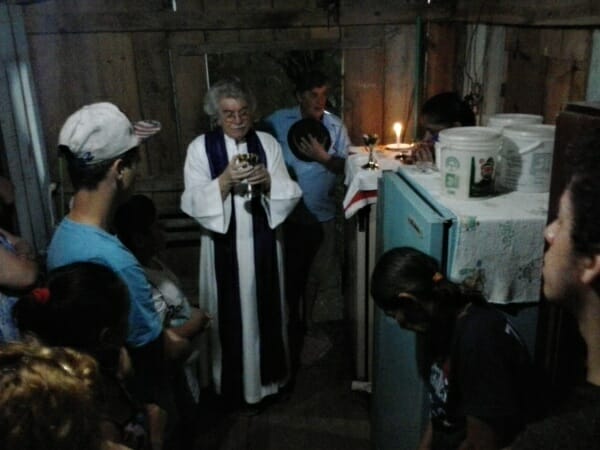 Could you give us some examples? “There was one man who was dependent on alcohol and slept at the dump. Fr Vilson spoke with the community, which then put him on a path of recovery. They literally rebuilt his dwelling, a wood shack, and they furnished it with a stove; someone else brought a bed, a refrigerator, and so on. Two weeks ago there he was, standing amongst the 15 teenagers who were being Confirmed; and last Thursday the Mass was celebrated at his house. We also learnt of the inhuman conditions that a certain woman was living in. Here again, the community got to work in helping her out. They themselves distribute to those in need whatever they are able to procure for them: food and clothing.” And as a sign that relationships really are becoming deeper, they recounted that last Friday twenty people visited the focolare for the confraternização, a Christmas celebration where everyone brings something to share. Also here at the morro, we didn’t only eat food like the famous Brazilian churrasco meat, but we also celebrated Jesus who once again deigned to be born as at Bethlehem in the poverty of a favela.”
Could you give us some examples? “There was one man who was dependent on alcohol and slept at the dump. Fr Vilson spoke with the community, which then put him on a path of recovery. They literally rebuilt his dwelling, a wood shack, and they furnished it with a stove; someone else brought a bed, a refrigerator, and so on. Two weeks ago there he was, standing amongst the 15 teenagers who were being Confirmed; and last Thursday the Mass was celebrated at his house. We also learnt of the inhuman conditions that a certain woman was living in. Here again, the community got to work in helping her out. They themselves distribute to those in need whatever they are able to procure for them: food and clothing.” And as a sign that relationships really are becoming deeper, they recounted that last Friday twenty people visited the focolare for the confraternização, a Christmas celebration where everyone brings something to share. Also here at the morro, we didn’t only eat food like the famous Brazilian churrasco meat, but we also celebrated Jesus who once again deigned to be born as at Bethlehem in the poverty of a favela.”
Weaving fraternal relationships
Weaving fraternal relationships

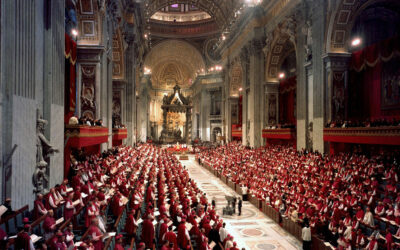
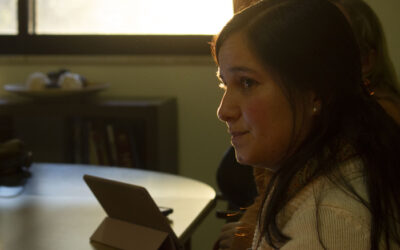
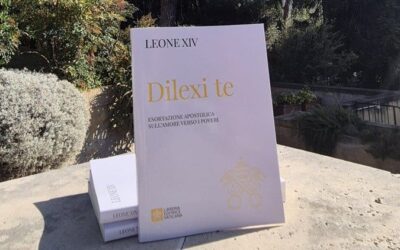
0 Comments